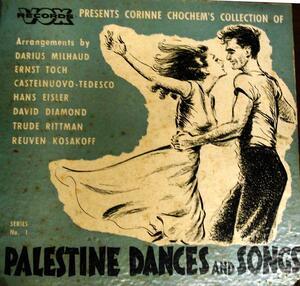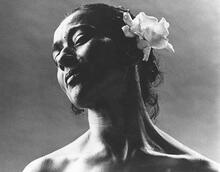Corinne Chochem
Corinne Chochem helped popularize Israeli folk dance as a choreographer and a dance teacher and with her albums of folk-dancing music. Chochem immigrated to the United States in 1920 and taught Hebrew and dance at a Montessori school in Newark. In 1930 she traveled to Israel, where she worked on a kibbutz and researched folk dance. On her return to the US, she studied dance before creating the Rikud Ami dance troupe. Chochem published two books, Palestine Dances in 1941 and Jewish Holiday Dances in 1948, and recorded albums of music for Israeli folk dancing with notations on how to execute the dances. She taught at the Jewish Theological Seminary, the University of California, and Cornell. In 1953 she settled in Los Angeles and focused on teaching dance.
Article
Best remembered for her contribution to Jewish cultural life and for her unique ability to inspire those around her, Corinne Chochem had a distinct impact on Hebrew folk dance, both in her teaching and her two books, Palestine Dances (1941) and Jewish Holiday Dances (1948), the latter an original work for which Leonard Bernstein, Darius Milhaud, Ernst Toch, and Tedesco wrote music based on the original folk tunes. Studying in Israel in 1950, she met and married the painter Yehoshua Kovarsky, and began to study painting. Later in life, under the name of Kovarska, she found fulfillment as a painter with several exhibits in Los Angeles. She used both acrylics and ink. Her final black period was exhibited in New York in 1987.
Corinne Chochem was born in Zwanitz, Russia, in 1905 to Esther (Gendelman) and Mendel Chochem. The family immigrated to the United States in 1920 and settled in Newark, New Jersey, where she taught Hebrew and dance at a Montessori school. Vitally interested in dance, she went to Palestine in 1930, where she worked on a A voluntary collective community, mainly agricultural, in which there is no private wealth and which is responsible for all the needs of its members and their families.kibbutz while researching folk dance. After studying with Martha Graham, Louis Horst, and Carmelita Maracci, she found Pauline Koner and discovered a kindred spirit. Frail, but with tremendous energy, Chochem founded the Rikud Ami dance group, taught at the Jewish Theological Seminary, the University of California, and as a guest artist at the Hillel Foundation at Cornell University. Her sister, Fanya Sage, was also a dancer. She also had a brother, Ben Charles. Corinne Chochem and her husband settled in Los Angeles in 1953, where she concentrated on her special talent: dance for children. Kovarsky died in 1967, and Chochem began a career as a painter. She died in 1990.





